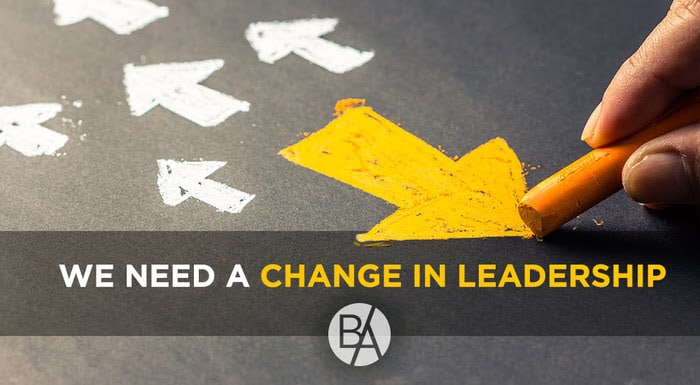Over the years as I have mentored executives and consulted organizations, I have noticed that when organizations are in trouble, they rapidly seek new leadership.
We see it in large businesses, sports teams, and even churches—the assumption that the subtraction of one person at the helm and the addition of a new person will equal instant growth.
How often have you seen a sports franchise try to turn things around by firing a head coach and hiring a replacement? Every time the NCAA Division I College Basketball Tournament starts, I wonder how many college basketball coaches will lose their jobs after March Madness fades away. Out with the old, and in with the new.
When a business is losing money, it hires a new CEO. When a church is stumbling, it searches for a new pastor. When our country is facing hard times, we elect a new president.
– Bobby Albert
How High Is Your Leadership Lid?
In his book, The 21 Irrefutable Laws of Leadership, John Maxwell tells us that we are the “lids” on our own success. I have found this to be true – my own leadership skills are often the “lid”, or limiting variable, on my personal life and business success.
If your leadership skills are strong, the organization’s “lid” is high. But if your leadership is lacking, then the organization is limited. The obvious question then becomes, “What is the best way to develop my leadership?”
The answer is to grow yourself. Greater leadership effectiveness is within your reach, and you can learn the skills needed. You only need to be willing to grow.
– Bobby Albert
There are two truths I want you to remember:
- Your organization will always be defined by your leadership.
- The size of your business reflects the size of your leadership.
Think about those two statements for a second. If you don’t like your current results, you can change them. In fact, every person can increase the effectiveness of his or her team by leveraging the math of leadership.
I’ve been writing about a unique way to engage employees and to make decisions called 1-2-3.
As our business grew, I saw how the participative leadership style (Engage2Lead employing the 1-2-3 leadership tool) profoundly lifted my leadership “lid” and the resulting performance of our team.
You as the leader can significantly increase your leadership “lid” by engaging your employees with a participative leadership style (Engage2Lead) by employing the 1-2-3 leadership tool.
What is 1-2-3?
1-2-3 is a unique approach to the decision-making process defined as:
At the very beginning of the decision-making process – AND before making a decision – the empowering leader seeks input from his or her employees. Such a leader asks:
1. Who can help me make a better decision?
2. Who will have to carry it out?
3. Who will be impacted by it?
The answers to the three questions above will guide leaders to assemble the right people and involve them, as appropriate, to help make important decisions.
The power of 1-2-3 is available to any leader, if they simply follow this approach as they make important decisions in their organization. Could I suggest to you that the benefits of such an approach are worth the effort? I know, because I’ve seen the outcomes: better decisions are made, and teams become more effective and efficient.
Leadership Is a Function of Relationships
– Bobby Albert
Relationship-oriented leaders are able to identify, select, coach, guide, support, and motivate people so they can achieve continual improvement.
Perhaps most importantly, these leaders relate with employees in ways that will help them feel good about themselves, their work, and their organization.
You can achieve these key relationships by:
- Involving your people in the decision-making process.
- Keeping an open mind and respecting others’ views.
- Encouraging communication, coordination, and cooperation among all your team members.
This focus on others is missing in the approaches of so many leaders. But you can see how we, as leaders, should view ourselves as servant-leaders. And the key to becoming the most effective servant-leader is to embrace both relationships and results (leading and managing).
Is a Change in Leadership Necessary?
The answer is YES! But I don’t necessarily mean the common way folks talk about changing leadership. Often, the most impactful changes to leadership occur without any visible changes to your organization chart.
I’m talking about you, as the leader, beginning to change yourself!
For most people, becoming an effective leader requires some changes and some work to get there, but leadership effectiveness is within your reach! When you enhance your relationships, you’ll raise your leadership “lid”. And when you raise your leadership “lid”, your people will thrive and your profits will soar.
Are there limits to your leadership lid? Are you open to change your leadership style? Please share your thoughts <here>, and share this article with your friends and co-workers.
Are your leading your organization toward growth? Take my FREE Lead2Grow Assessment <here> to understand more. (plus – you’ll receive custom-tailored suggestions about next steps to take, starting today)


